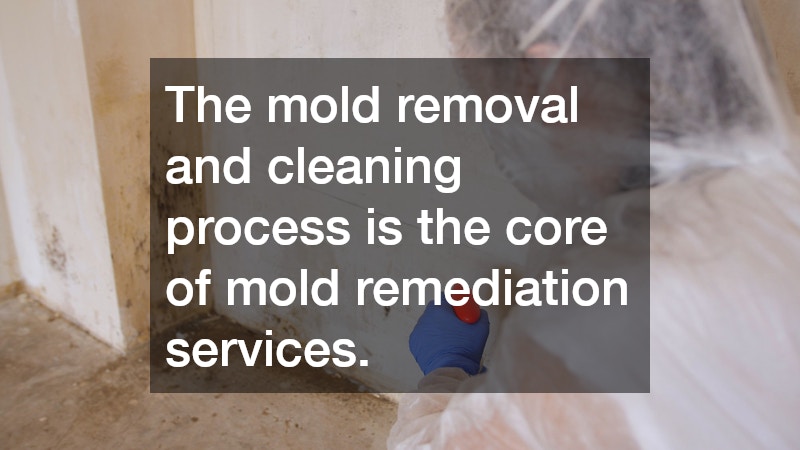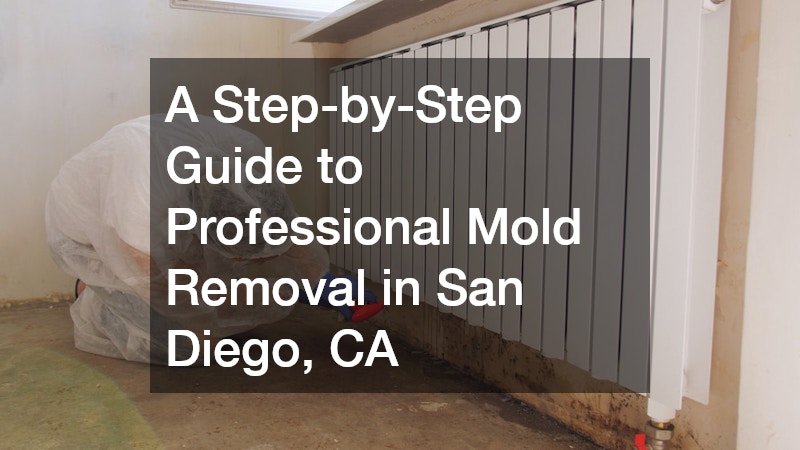Mold is a common yet serious issue that can affect both the health of occupants and the structural integrity of buildings. In a coastal city like San Diego, the presence of moisture and high humidity levels can contribute significantly to mold growth. Understanding the necessity of professional mold removal underscores the importance of addressing this issue promptly to prevent detrimental impacts on health and property value. Mold spores, when inhaled, can cause respiratory problems, allergic reactions, and other health issues, making it vital to manage and eradicate them effectively.
The value of a property can be drastically reduced due to mold infestation. Home inspections, which are crucial when buying or selling property, often reveal mold problems that can deter potential buyers. Hence, investing in professional mold removal services not only safeguards health but also preserves and enhances property value. Engaging professional help ensures that the issue is handled with the expertise required to prevent recurrence, offering peace of mind to homeowners.
This guide will take you through the detailed steps involved in professional mold removal, focusing on processes tailored for the San Diego environment. By highlighting each phase from initial assessment to preventive measures, this article aims to inform readers about the thoroughness and necessity of professional intervention in mold remediation efforts.
What Are the Steps in Professional Mold Removal?
1. Initial Assessment and Inspection
The first step in professional mold removal is the initial assessment and inspection. Professionals begin the process by identifying the extent of mold growth and determining its source. This usually involves a thorough visual inspection and may include the use of technology such as moisture meters and infrared cameras to detect hidden mold. It’s crucial to address not just the visible mold but also the underlying cause, which could be leaks or condensation issues.
During the inspection, mold remediation specialists look for signs of water damage and take samples from various areas for lab analysis to identify the type of mold present. Identifying the mold type helps in formulating an effective removal strategy since different molds require different approaches. This thorough initial assessment is critical for devising a comprehensive removal plan tailored to the specific conditions of the site.
Professionals assess the degree of contamination to develop an appropriate action plan. This plan outlines the necessary steps, tools, and techniques needed for successful mold removal. By understanding the full scope of the issue, they ensure that all affected areas are treated, minimizing the risk of recurrence and ensuring a safer environment for inhabitants.
2. Containment and Air Filtration
Once mold has been identified and assessed, containment is the next critical step to prevent the further spread of spores. Mold spores are microscopic and can easily become airborne, contaminating other areas of the building. Professionals use advanced containment strategies, such as setting up physical barriers and employing negative air pressure, to isolate the affected zones and protect unaffected areas.
Air filtration is also essential during this stage, employing high-efficiency particulate air (HEPA) filters to capture airborne spores. This reduces the risk of mold spreading beyond the contained area. By maintaining a controlled environment, professionals can focus on the remediation without posing additional risks to inhabitants or the property itself.
Implementing strict containment and air filtration measures ensure that the removal process is not only effective but also safe. These steps protect the indoor air quality during remediation, which is especially important in residential settings or spaces frequently occupied by people. Moreover, such precautions are pivotal in complying with health and safety standards, thereby reducing liability issues for property owners.
3. Mold Removal and Cleaning
The mold removal and cleaning process is the core of mold remediation services. After containment, the actual removal begins, where professionals use specialized cleaning agents and equipment to eliminate mold from surfaces. Materials like drywall, insulation, or carpet that are heavily infested may need to be removed entirely. This step is crucial in ensuring that all mold, visible and invisible, is eradicated.
Professionals often use antimicrobial agents and biocide treatments to clean and disinfect surfaces. These products not only remove existing mold but also help in preventing the growth of new mold colonies. The use of commercial-grade cleaning tools and products ensures that all mold spores are effectively removed, which is not always achievable with over-the-counter cleaning solutions.
In this phase, meticulous attention to detail is essential to prevent any mold from being left behind. Mold can quickly grow back if any spores or moisture are overlooked. Therefore, professionals ensure a thorough cleaning of all affected areas, including HVAC systems, which can promote mold growth if not properly cleaned. By doing so, they guarantee a comprehensive solution to mold problems, securing a healthier indoor environment.
4. Restoration and Prevention
The final step in professional mold removal involves restoring the affected area to its original condition. This may involve repairing or replacing damaged structures, such as drywall or flooring. Restoration is not only about repairing visible damage but also ensuring that the underlying issues, such as leaks or poor ventilation, are addressed to prevent future mold growth.
Prevention strategies are also integral to this stage, as they ensure the longevity of the mold remediation efforts. Professionals may suggest improvements such as better ventilation systems, the installation of dehumidifiers, or changes in habits that reduce humidity levels indoors. Educating the property owners on maintaining mold-free environments is a vital part of prevention, empowering them to take proactive measures.
By focusing on both restoration and prevention, professional mold remediation services offer a comprehensive solution that addresses not only the present issue but also future risks. This approach ensures that the property remains safe, healthy, and attractive to both current occupants and potential buyers, ultimately preserving its value and integrity.
Conclusion
Professional mold removal is not only about eradicating the visible signs of mold but also about ensuring a comprehensive approach that safeguards health and property value. From the initial assessment to the implementation of preventive measures, each step in the process plays a vital role in achieving a mold-free environment. In a humid coastal city like San Diego, understanding the necessity of professional help is crucial for maintaining a safe and healthy living space.
The expertise and attention to detail that professionals bring to mold remediation cannot be understated. Their ability to identify and address both the visible and underlying causes of mold infestation ensures that the problem is thoroughly resolved. Furthermore, their focus on prevention and ongoing maintenance empowers property owners to sustain a mold-free environment, thus preserving both their health and property value.
In conclusion, investing in professional mold removal services ensures that one of the most common yet dangerous household issues is handled effectively. By choosing experienced and reliable professionals, homeowners in San Diego can enjoy peace of mind, knowing that their environment is safe, healthy, and protected from the risk of mold-related complications.

